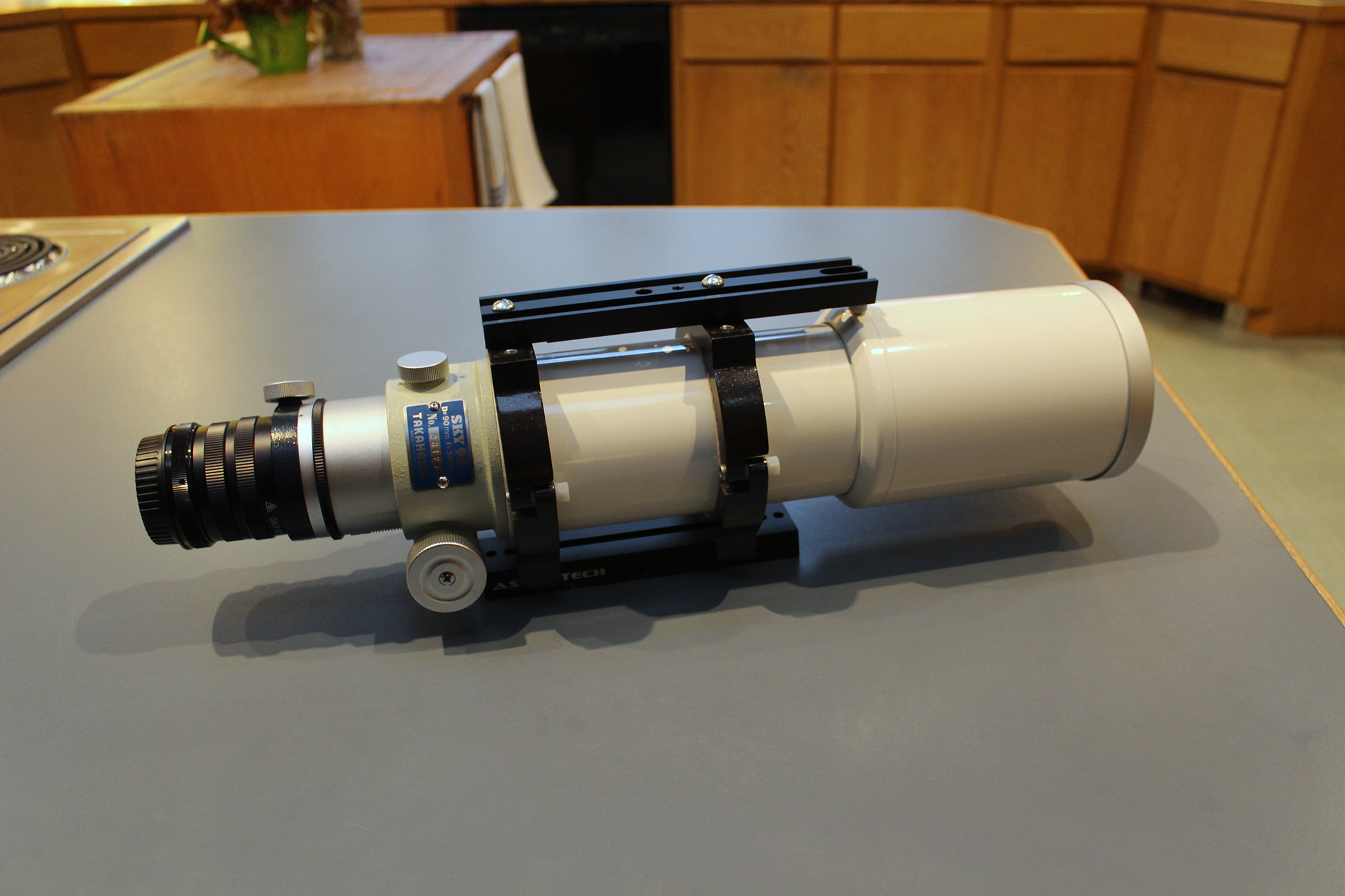
Updated 3/22/18
1) Takahashi Sky 90 (3rd Review) 3/20/18
(90 mm f/5.6 apochromatic refractor, OTA only, $2399 when last sold, NLA)
(See also Review #1 and 90 mm Apo Comparo)
If the old Klingon saying goes, "Fool me twice, shame on me," what does that say about three times?
This is my third Takahashi Sky 90. The first two (see links above) each had at least some minor issues. Note that "issues" means something different for a Takahashi than it does for many other products. You expect a Tak to be perfect, and most are. After all this time, the Sky 90 remains the only Takahashi telescope I find difficult to love. That does not stop me from trying; every time I see one for sale somewhere I am tempted to buy it. And so I did, once again, in February of 2018.

(Above) Whatever else it is, it's a beautiful piece of equipment.
The star test on this one is good. Defocused rings show a nice diffraction pattern on both sides of focus, but I do notice a little bit of energy on one side of the defocused disc. There is a trace of undercorrection, nothing serious. Having said that, stars do not want to focus down into pinpoints, a problem that gets worse the further away you get from the center of the field. Blown up, stars look like Hubble's Variable Nebula. I can almost convince myself the scope is really, really good, until I look through the FC76 and FS60, which are two of the sharpest telescopes I've ever owned (the FS60 is so sharp it almost hurts to look at stars, as if they're going to poke your eye out.) Along with the Mewlons, the Sky 90s have a reputation for going out of collimation. Unfortunately, unlike the Mewlon, you cannot adjust the collimation on a Sky 90.
To show you the difference, I took these image of the moon on the same night with the ASI120MM.
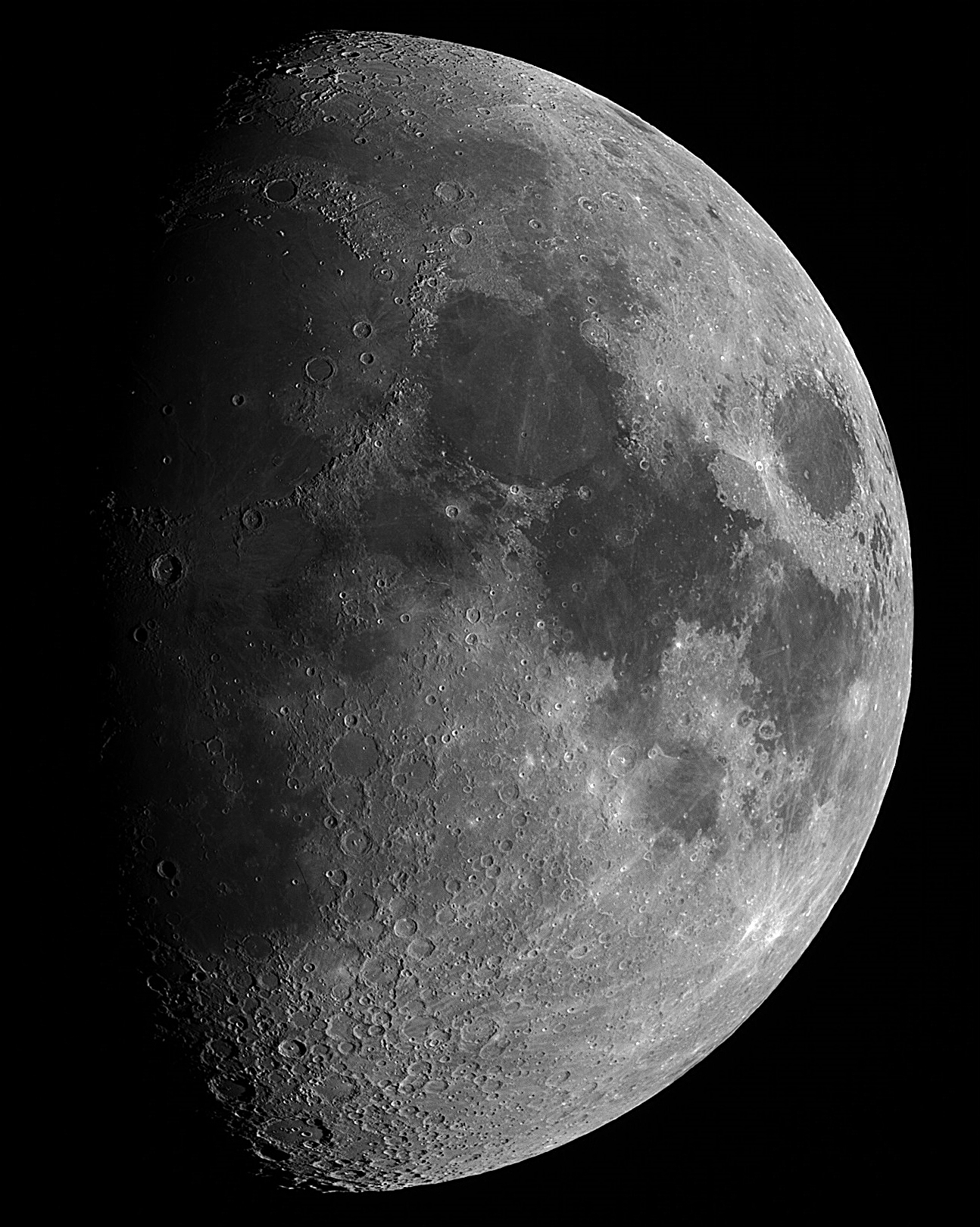
(Above: FC76)
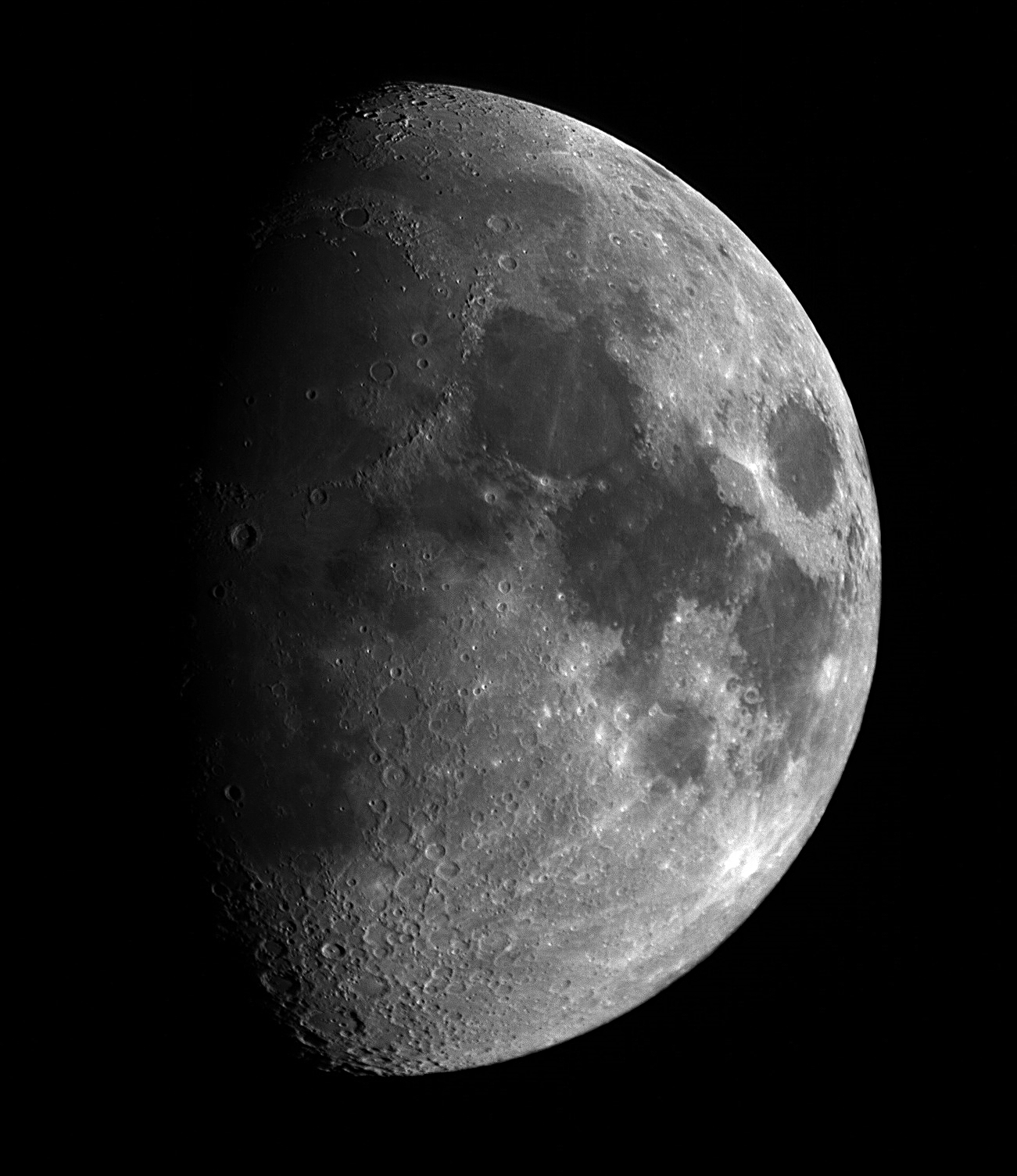
(Above: Sky 90)
I did my best to keep the variables constant. I took about the same number of frames and used the same wavelet processing macros on both. The Sky 90's image looks good...until you look at the one taken with the FC76. Subjectively, I think the difference is even greater through the eyepiece. My Astro-Tech AT72 and AT66 are both sharper.
I have a Sky 90 field flattener/reducer (TFP 0900, about $477 street.) This expensive device is useful not only on the Sky 90, but on the FC76/FS78, and the FS60 (where it lives right now.) One night, I decided to check out the scope's deep sky performance with the device in place.
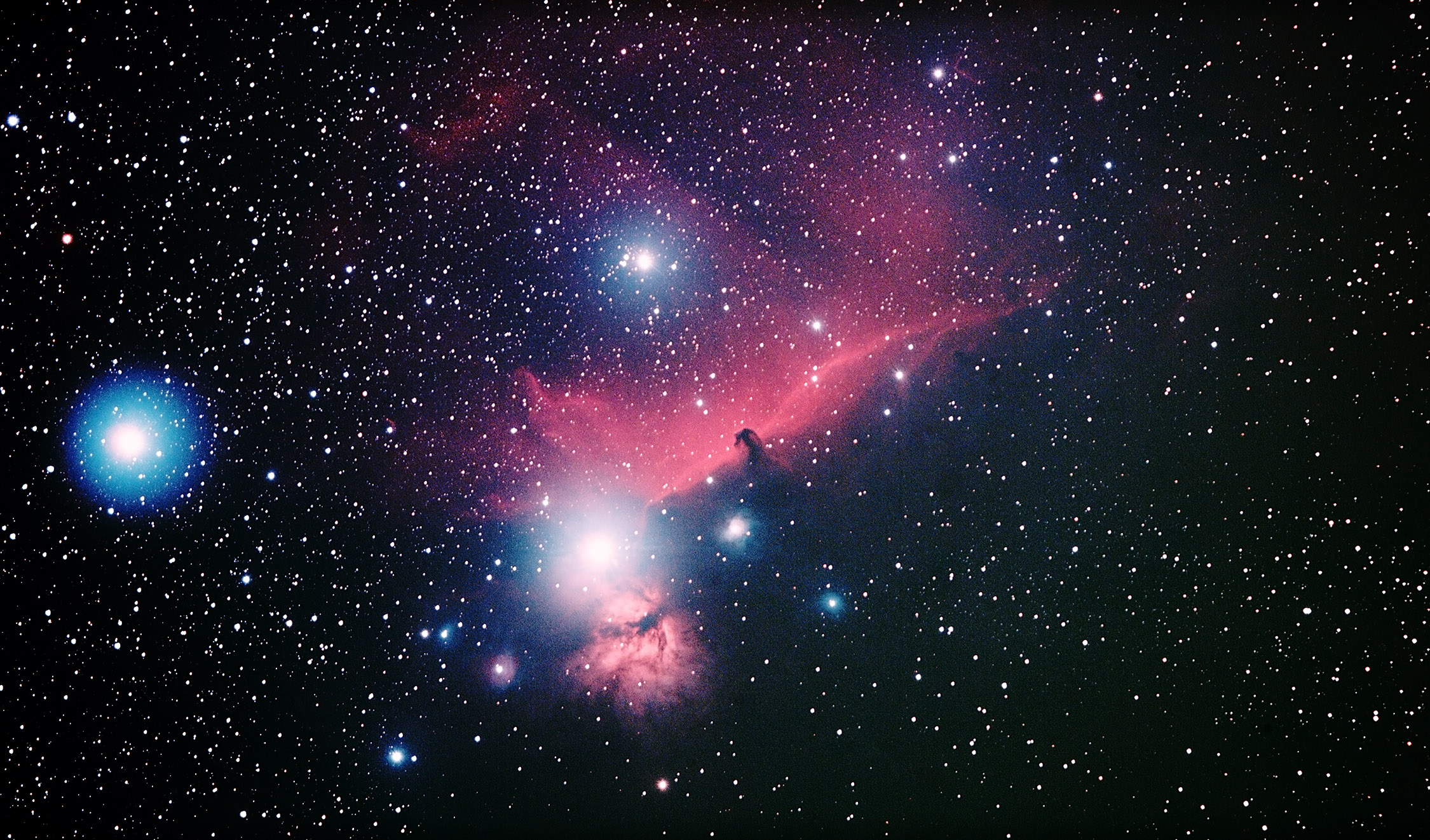
(Above: 12 frames, 33 minutes, HuTech modded EOS 5D Mk III, ISO 2500. AVX mount with SBIG Sti-c autoguider, PHD2, Deep Sky Stacker, CS6)
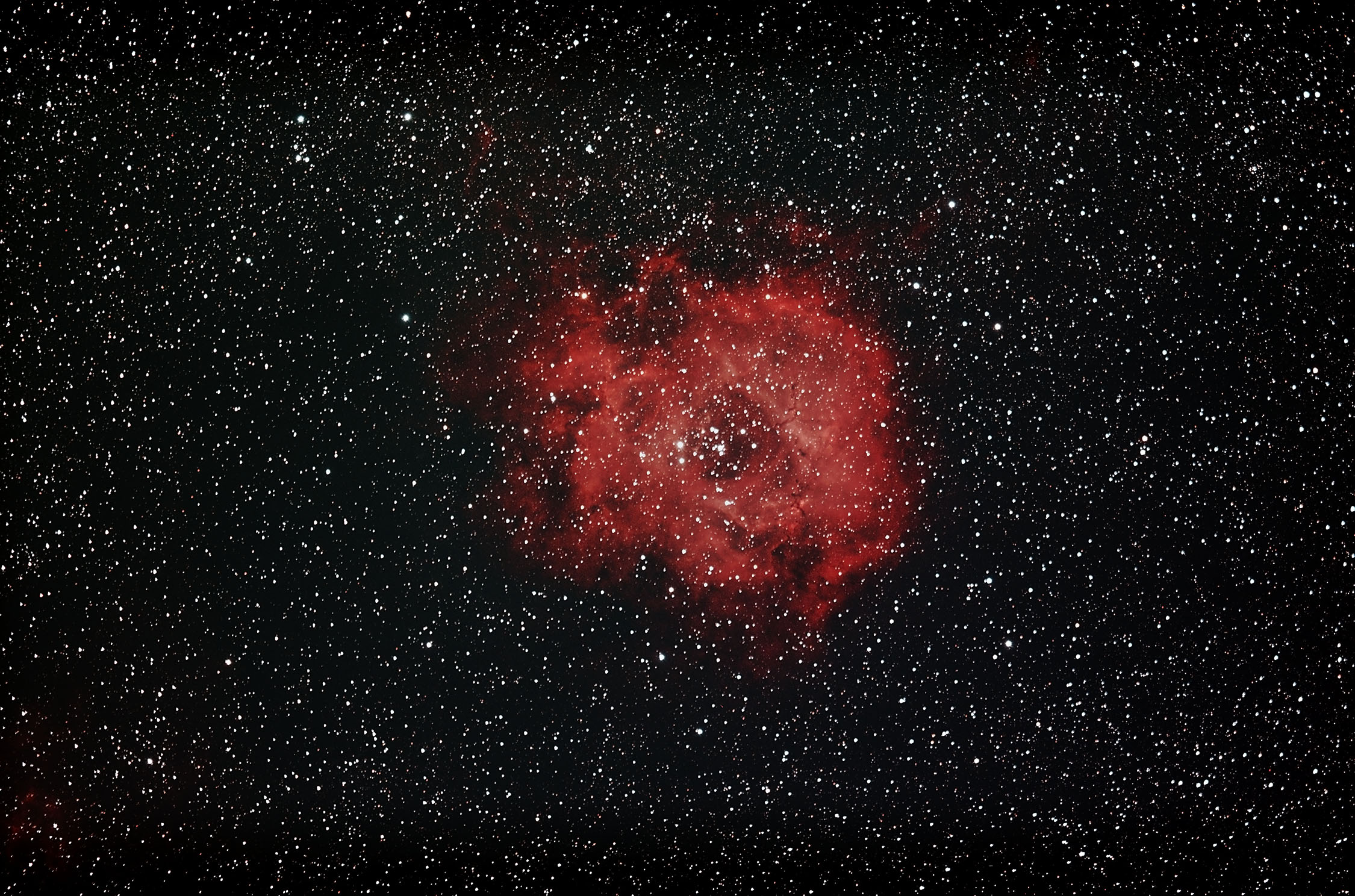
(Above, 14 frames, 56 minutes, same hardware/software)
Ummm...hey. Those are really nice. They are still not perfect though. Examine the star images up close and they still aren't pinpoints (the FC76 and FS60 are still better, and not by a little bit) but these are pleasing results. Furthermore, the TFP0900 brings the scope down to a fast f/4.5 and its resulting 407 mm focal length means you can cover a lot of sky. Neither of the above images was a serious attempt to capture these objects, but in the case of the Horsehead, I think I'd like to print and frame it. I was planning on reselling the scope until I saw these. Even though it isn't the sharpest refractor I own, nothing else I have is this fast. It may have found its niche.
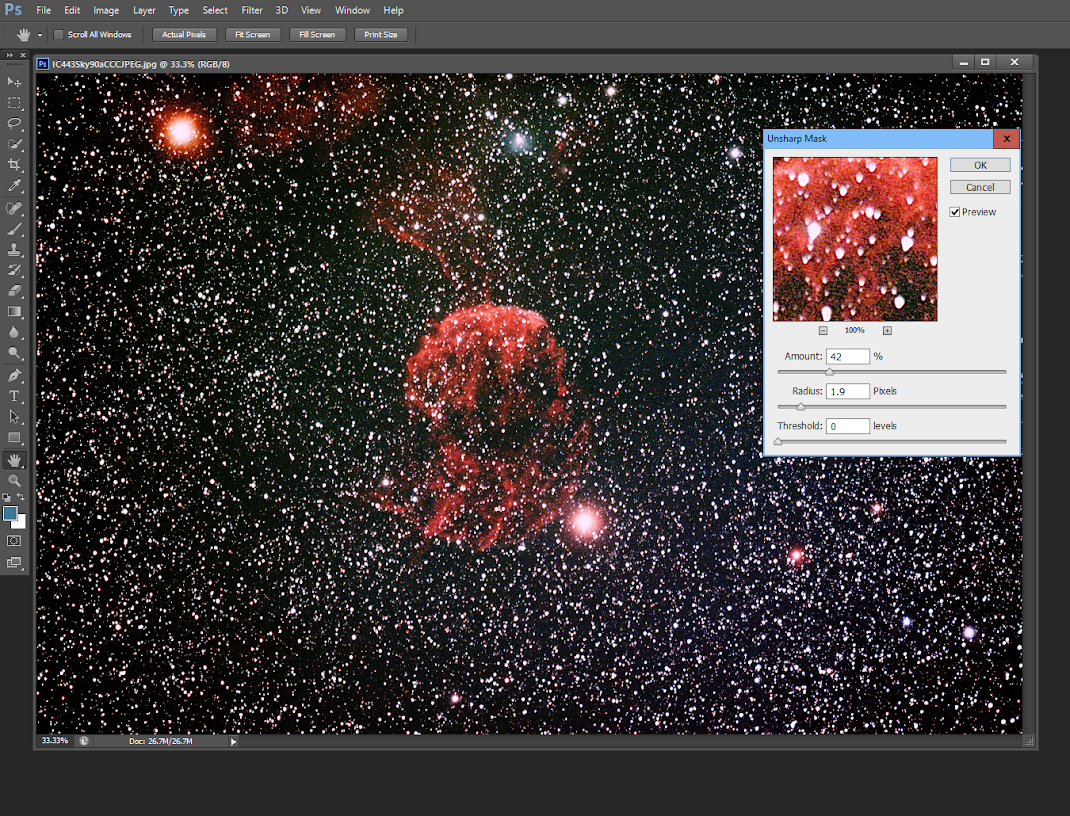
(Above) In Photoshop, the stars are triangles or comets when viewed close up. These are not guiding errors. The stars look like this visually too when magnified.
I'm trying to come to terms with this. To me, the Sky 90 is a fast, wide field, dedicated astrograph. Based on the three samples I've seen, I don't think I would market it as a visual telescope. The marketplace has gotten too competitive (as I write this, I notice Astro-Tech has come out with a Mark 2 version of the AT72, and it's all I can do to keep from ordering one.) With the TFP0900, you're pushing $3K, and that's before you add the mandatory mount autoguider, camera, and the rest. To paraphrase a nice review of the Sky 90 I read online, I don't object to the thing, I object to how much it costs.
If you've been considering the purchase of one of these, I hope this brief review gives you some direction.